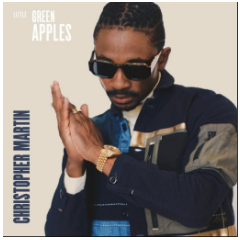The Ultimate Guide to Translating Video Content with AI Tools in 2025

In today’s digital age, video content has become a cornerstone of global communication. From social media to corporate training, videos are a powerful medium to convey messages, tell stories, and engage audiences worldwide. As businesses and content creators strive to reach a global audience, the ability to translate video content effectively has never been more critical.
In 2025, advancements in generative AI development are revolutionizing the way we translate video content, making it easier than ever to bridge language barriers and engage diverse audiences. This blog will explore how these AI-powered tools work, their benefits, and how you can leverage them to enhance your video content.
Why Translate Video Content?
Global Reach:
Translating video content allows you to expand your audience beyond language barriers. By offering content in multiple languages, you can connect with viewers from different parts of the world, increasing your reach and impact. For example, a marketing video in English can be translated into Spanish, Mandarin, and Hindi, allowing it to reach millions of additional viewers who prefer or only understand these languages.
Engagement:
Localized content enhances viewer engagement. When viewers can consume content in their native language, they are more likely to understand, appreciate, and interact with it. This results in increased engagement and a more devoted audience. Studies have shown that people are more likely to watch a video to completion and share it with others if it is in their native language.
SEO Benefits:
Multilingual content improves search engine visibility. By providing video content in various languages, you can rank higher in search results for different regions, driving more organic traffic to your site. Search engines like Google prioritize content that is relevant to the user’s language and location, so having translated videos can significantly boost your SEO efforts.
Top 5 AI Video Translation Tools
Brief History: The journey of video translation technology began with manual subtitling and dubbing, which were time-consuming and costly. Over the years, advancements in machine learning and natural language processing have paved the way for AI-driven solutions that automate and streamline the translation process. Early AI tools were limited in their capabilities, often producing translations that lacked context and accuracy. However, recent developments have led to more sophisticated tools that can handle complex translations with high precision.
In 2025, several AI tools are leading the charge in video translation. Here are some key players:
HeyGen: Known for its high accuracy and user-friendly interface, HeyGen offers robust translation and dubbing features. It uses advanced neural networks to ensure that translations are contextually accurate and natural-sounding.
Vidnoz AI: This tool excels in providing fast processing speeds and supports a wide range of languages. Vidnoz AI is particularly popular among content creators who need to translate large volumes of video content quickly.
Veed.io: Veed.io is popular for its comprehensive video editing suite, which includes powerful translation capabilities. It allows users to edit, translate, and add subtitles to their videos all in one platform.
Kapwing: Kapwing offers an intuitive platform for creating and translating video content, making it accessible to users of all skill levels. Its collaborative features make it easy for teams to work together on video projects.
Rask: Rask focuses on maintaining high-quality translations while preserving the original video quality. It is known for its ability to handle lip-syncing, ensuring that dubbed videos look natural and professional.
Features of AI-Powered Video Translation Tool
In an era where video content dominates global communication, the need for seamless and accurate translations has skyrocketed. Businesses and creators are leveraging AI media & entertainment tool development to break language barriers and engage audiences worldwide. Modern AI video translation tools combine speed, precision, and user-friendliness, making them indispensable for scaling content across diverse markets. Let’s explore the key features that make these tools game-changers in the media and entertainment industry.
High Translation Accuracy: AI tools use advanced algorithms to ensure that translations are contextually accurate and preserve the original meaning. This is crucial for maintaining the integrity of the content. For instance, HeyGen uses deep learning models trained on vast datasets to understand and translate complex sentences accurately.
Broad Language Support: These tools support a wide range of languages, allowing you to reach a diverse global audience. For instance, HeyGen and Vidnoz AI offer support for over 100 languages. This broad language support is essential for businesses looking to expand their reach into new markets.
User-Friendly Interfaces: AI video translation tools are designed with simplicity in mind, making it easy for users to navigate and utilize their features without needing extensive technical knowledge. Tools like Kapwing and Veed.io offer drag-and-drop interfaces and step-by-step guides to help users get started quickly.
Fast Processing Speeds: One of the significant advantages of AI tools is their ability to process translations quickly, reducing the time it takes to bring your content to market. Vidnoz AI, for example, can translate and subtitle a 10-minute video in just a few minutes, making it ideal for time-sensitive projects.
Quality Preservation: These tools ensure that the original video quality is maintained, even after translation and dubbing. This is essential for delivering a professional and polished final product. Rask, for instance, uses advanced video processing techniques to ensure that the translated video retains the same quality as the original.
Step-by-Step Guide to Translating Video Content with AI
Step 1: Transcribing the Original Audio Start by transcribing the audio from your video. Many AI tools, like Veed.io and Kapwing, offer automatic transcription services. This step is crucial as it provides the text that will be translated into other languages. Accurate transcription is the foundation of a good translation, as any errors in the transcript will carry over into the translated content.
Step 2: Using AI Tools to Translate the Transcript Once you have the transcript, use AI translation tools to convert the text into your target languages. Tools like HeyGen and Vidnoz AI can handle this efficiently, ensuring high accuracy and context preservation. These tools use machine learning models that have been trained on vast amounts of multilingual data, allowing them to produce translations that are both accurate and natural-sounding.
Step 3: Generating Subtitles in the Target Language After translating the transcript, generate subtitles in the target language. AI tools can automatically sync these subtitles with the video, making the process seamless. This step enhances accessibility and engagement for viewers who prefer reading along. Subtitles are particularly important for reaching audiences who may not be able to listen to the audio, such as those who are deaf or hard of hearing.
Step 4: Using AI for Voice-Over and Lip-Syncing For a more immersive experience, use AI tools to create voice-overs in the target language. Advanced tools like Rask can even handle lip-syncing, ensuring that the voice-over matches the lip movements of the original video. This creates a more natural and engaging viewing experience, as the dubbed audio appears to be coming directly from the speakers in the video.
Step 5: Reviewing and Editing the Final Output Finally, review and edit the translated video to ensure quality. While AI tools are highly accurate, human oversight is essential to catch any nuances or errors that the AI might have missed. This step ensures that the final product is polished and professional. It’s also a good idea to have a native speaker of the target language review the translation to ensure it sounds natural and culturally appropriate.
Benefits of Using AI for Video Translation
Cost-Effectiveness: AI tools significantly reduce the need for human translators, lowering costs. This makes video translation more accessible for businesses of all sizes. For example, a company that needs to translate training videos into multiple languages can save thousands of dollars by using AI tools instead of hiring multiple translators.
Speed: AI-driven translations are much faster than manual processes, allowing for quicker turnaround times. This is particularly beneficial for time-sensitive content. For instance, a news organization can use AI tools to quickly translate and publish breaking news videos in multiple languages, ensuring that they reach a global audience in real time.
Consistency: AI tools provide reliable quality across translations, ensuring that your message is consistently conveyed in every language. This is important for maintaining brand integrity and ensuring that your content is understood as intended by all viewers.
Scalability: With AI, you can easily scale your translation efforts to include multiple languages, reaching a broader audience without a proportional increase in effort or cost. This scalability is particularly beneficial for businesses looking to expand into new markets or reach a global audience.
Future Trends in AI Video Translation
Advancements in AI: Emerging technologies, such as neural machine translation and deep learning, are continually improving the accuracy and efficiency of AI translation tools. These advancements promise even better performance in the future. For example, new AI models are being developed that can understand and translate context more accurately, leading to more natural and accurate translations. These models can handle idiomatic expressions and complex sentence structures better than ever before, reducing the need for human intervention.
Integration with Other Tools: AI translation tools are increasingly being integrated with other video editing and content creation tools. This integration streamlines the workflow, making it easier to produce high-quality, multilingual video content. For instance, some video editing platforms now offer built-in translation features, allowing users to translate and edit their videos all in one place. This not only saves time but also ensures consistency across different stages of video production.
Increased Accessibility: As AI tools become more advanced and affordable, they are making video content accessible to a broader audience. This includes not only different languages but also features like automatic captioning for the hearing impaired. AI-driven accessibility features are becoming standard in many video platforms, ensuring that content is inclusive and reaches as many people as possible.
Conclusion
AI tools are revolutionizing video translation, making it easier, faster, and more cost-effective to reach a global audience. By leveraging these tools, you can enhance engagement, improve SEO, and ensure consistent quality across multiple languages. The benefits of using AI for video translation are clear: cost-effectiveness, speed, consistency, and scalability. However, it’s also important to be aware of the challenges, such as cultural nuances and technical limitations, and to ensure quality control through human oversight.





